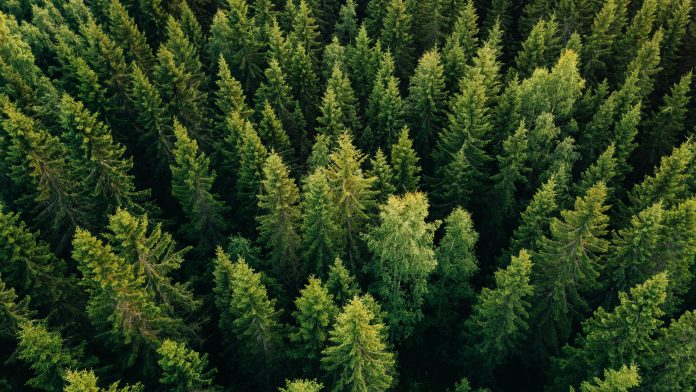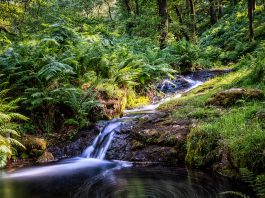A collaborative research team from the University of Eastern Finland, and the University of Helsinki, have stressed the necessity of forest owners discussing biodiversity loss denial.
Various surveys conducted regarding forest owners have found that private family forest owners in Finland value nature and biodiversity. However, these findings tell us more about the general ideals regarding Western culture than about forest owners as protectors of biodiversity.
How did researchers investigate biodiversity?
The collaborative research team identified three common modes of thought, that forest owners employ to conceptualise the maintenance of biodiversity, and their own role within that process. These modes of thought also consider various concepts regarding sustainable forest use among family forest owners, who hold control over the use of two thirds of Finland’s forests.
Scientists discovered that just under 40% of forest owners fall back on a mode of thought, which calls for them not to promote biodiversity more than the law requires. Owners may agree to the management measures that are recommended for their commercial forests by forestry professionals to appease them, but they do not perceive a genuine need for these measures.
“To this group, the problem of biodiversity loss does not exist, and concerns about the environment are seen as unrealistic fringe ideas held by nature conservationists. Modern ideas about sustainability are not part of this mode of thought,” explained Tuomo Takala, a researcher at the University of Eastern Finland.
In comparison, the next 40% of forest owners are left with a positive feeling that they have done their part to conserve biodiversity, so long as they follow the standard measures for taking biodiversity into account in cutting operations, such as, a buffer zone on the shoreline, or a group of retention trees left in a clear-cut area.
Additionally, the habitats of endangered species can also be saved in cutting operations without any opposition, as long as the habitats are known beforehand, and are not too large or many.
Why are forest owners not considering biodiversity more extensively?
“To this group, finding existing areas of high nature value and preserving them in an economically optimal way is precisely what is meant by conservation of biodiversity. Thanks to the best forestry in the world, there cannot be such a thing as biodiversity loss here,” Takala commented.
Scientists have noted that forest owners prefer to leave responsibility for conserving biodiversity to the forestry professionals who plan the cuttings. This multi-objective forestry outlook is also the mainstream view of sustainable forestry in Finnish forest policy.
“We can think of it as a weak-sustainability model that approaches the different dimensions of sustainability equally in principle, but in which commercial forest use ultimately sets the framework that conservation efforts operate within,” Takala added.
The modes of thought considered illustrate two of the ways that forest owners keep the unpleasant idea of biodiversity loss out of their observation, even if biodiversity loss in Finnish forests is well documented and frequently raised in the media.
Scientists stress that these modes, and other manifestations of biodiversity loss denial, should be discussed more; just like climate change denial was discussed in the recent past.
What impact is this attitude having on the environment?
“According to this mode of thought, we are quickly destroying our forest nature,” Takala explained. “According to this group, the way we use forests needs to be changed fundamentally and quickly, either voluntarily or through further regulation.
“Especially old-growth forests need to be removed from commercial forestry use in significant numbers. Specific sites of high nature value and areas where endangered species currently exist are not the only things worth preserving – some sites where endangered species could settle in the coming decades should also be saved.”
Considering the requirements of nature means that concerned forest owners will have a framework that they can employ to plan their commercial forest use in a way that prioritises the ecological dimension of sustainability over the commercial dimension.
Therefore, these forest owners would take the responsibility of conserving biodiversity into their own hands. This also means that they will not outsource the obligation to the forestry professionals who plan their cuttings, knowing that conserving biodiversity is not the primary task of these professionals.
“In this strong-sustainability mode of thought, the most impactful decisions from the biodiversity perspective have already been made before any forestry professionals enter the picture,” Takala commented.
How important is addressing forest owners’ varying attitudes?
The modes of thought discussed throughout the study pervade all discussion on the environmental impacts of forestry; some are in a state of emergency, while others see no problem at all.
“To understand and manage the conflicts, and the polarised conversation, it is essential that we learn how to separate these two ways of conceptualising sustainability in forest use. The idea of one sustainability – a single goal shared by everyone – obscures our fundamental differences of conception, narrows political discussion and hamstrings our attempts to make considered decisions,” Takala said.
Understanding this difference is particularly important for those making decisions about forest use; asking whether forests are in a state of environmental emergency, and whether things need to fundamentally change regarding how forests are utilised as a result, is a good way of examining forest owners’ differing conceptions of sustainability.
What have scientists discovered?
The research team discovered that forest owners’ primary concern lay with issues surrounding nature, which is arguably satirical given that a significant amount of them refuse to acknowledge the increasing issue of biodiversity loss.
In order to promote strong sustainability thinking among forest owners, it needs to be emphasised that service products allow forest owners to examine and control the nature that is in their own forests. Working together with nature professionals, will enable them to plan their forest use with the needs of nature as the starting point.
Additionally, scientists stress that it is time to develop new forest planning and advisory services where in which commercial forest use is planned in the framework of biodiversity maintenance, instead of the other way around, and to offer these services alongside current forestry planning and advisory products. This is considered as a critical and necessary movement, especially being as such strong-sustainability forest services are currently not available in Finland.
“The personal experiences produced by forest services could be an effective way of increasing people’s sensitivity to environmental issues. Of course, they would also give forest owners more information about nature and their own values, but information alone is not enough – information about biodiversity loss is already out there for anyone to find, as long as they’re prepared to take it in.
“The most important thing a strong-sustainability forest service model can achieve is getting forest owners to ask themselves what they can and are ready to do for nature,” Takala concluded.








